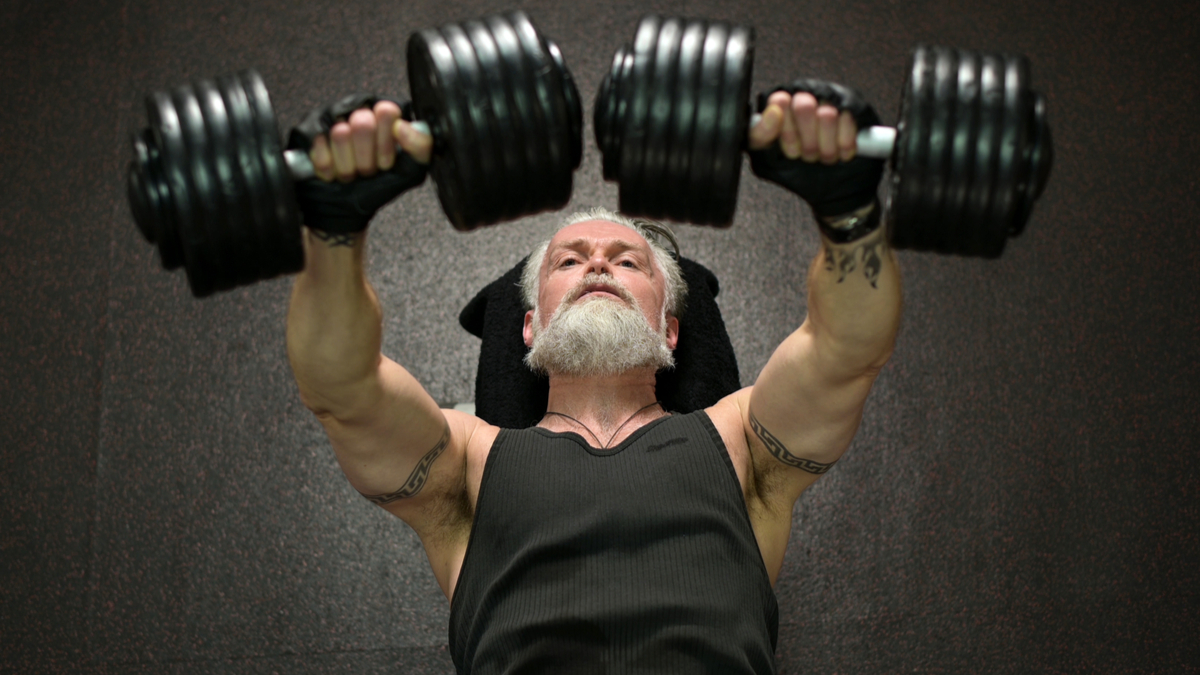Products You May Like
It’s every lifter’s goal to pack on muscle and get stronger, right? If not, why go to the gym so darn much? You probably started in your teens and toyed around to figure out what worked and what didn’t. You built some muscle and had a great time reaching some hard-earned milestones. Who doesn’t remember their first time putting two plates on the bar?
But then, you got a little older and developed a few aches and pains “out of nowhere”. It was somewhat freeing to swing open the gym doors, perform a bare minimum warm-up, and pile plates onto the bar while throwing caution to the wind. Things are a little different now.
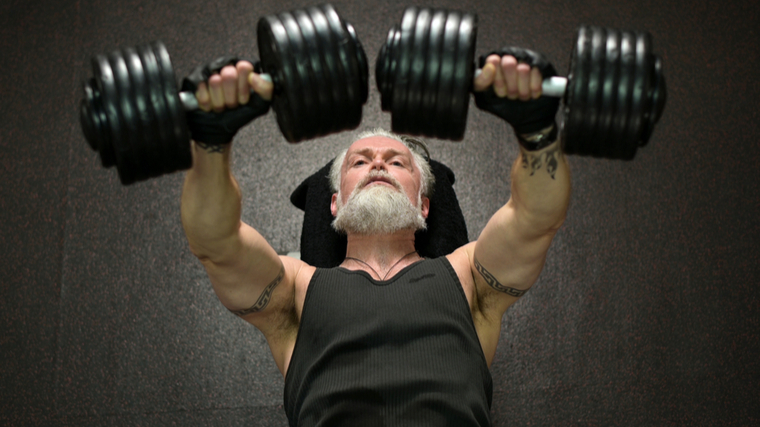
It’s time to train like you’re 40 (or older). That doesn’t mean you need to join the Silver Sneakers group exercise class, but you’ll need to assess your recent progress, consider your overall health, and maybe even adjust your goals.
Editor’s Note: The content on Breaking Muscle is meant to be informative in nature, but it should not be taken as medical advice. When starting a new training regimen and/or diet, it is always a good idea to consult with a trusted medical professional. We are not a medical resource. The opinions and articles on this site are not intended for use as diagnosis, prevention, and/or treatment of health problems. They are not substitutes for consulting a qualified medical professional.
A New Outlook After 40
If you’ve been lifting for more than a few years, you’ll have maybe noticed the need to avoid a few exercises, lessen the loads, and work around some achy joints.
The mileage has started to set in from all those years of heavy lifting. You may find yourself talking about the heyday of your record lifts, how big you used to be, and how “kids these days” don’t know what they’re doing.
You’re just fooling yourself if you don’t realize you’ve crossed into new territory. If you crave longevity, functioning knees and shoulders, and still want to make appreciable progress towards having a great physique, you need to adopt a different mindset than you had 20 years ago.
Ask yourself these questions:
- How much progress have you really made in the last six months? Or the past year? How about over the last five years?
- After a workout, do you feel tired but good, or are you limping out of the gym with joint pain?
- When you’re in the gym, are you trying to be the big man on campus and serve your ego or are you just trying to gain some muscle, drop some fat, and build some strength?
It’s important that you answer honestly because it will help define where you currently stand, where you’re going, and if you’ll get there.
There are a few factors that can have a huge influence on your results. If you started out young and had rapid gains, it’s most likely not going to be as easy at this point. You’ve probably built a lot of muscle early on and your system is more or less “used to” the type of hypertrophy training you’ve been performing.
Your hormones also go through a natural decline as you age, but that too can depend on a host of factors such as sleep quality, weight gain, stress levels, and activity levels. (1) But do not despair. There is hope for you yet.
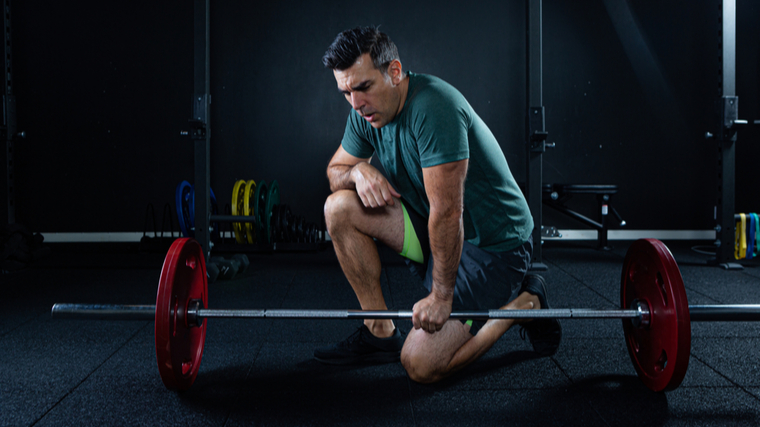
If you’re new to hypertrophy-style training then, no matter your age, you’ll reap some pretty substantial gains in muscle since your body has never undergone such a program.
With that said, hypertrophy training requires a shift in perspective as opposed to that of pure strength or power training. With the latter, the concern is placed on numbers. Percentages of one-rep maxes, rep goals, and a careful eye to keep those numbers moving up. Hypertrophy, on the other hand, does take strength progression into consideration somewhat, but it is much more focused on achieving fatigue and recruiting (stimulating) more muscle fibers.
Many strength and power athletes are less concerned with their muscle size and more focused on lifting a big weight from point A to point B. Training for muscle mass, conversely, should be less focused on lifting big weights and more focused on training the body in a particular way to grow more muscle.
10 Rules to Build Muscle After 40
What’s a plan without a few ground rules? You may scoff at the idea that you’ll need to change anything at all. ‘All I need to do’, you think, ‘is train harder, eat more, and take more supplements.’
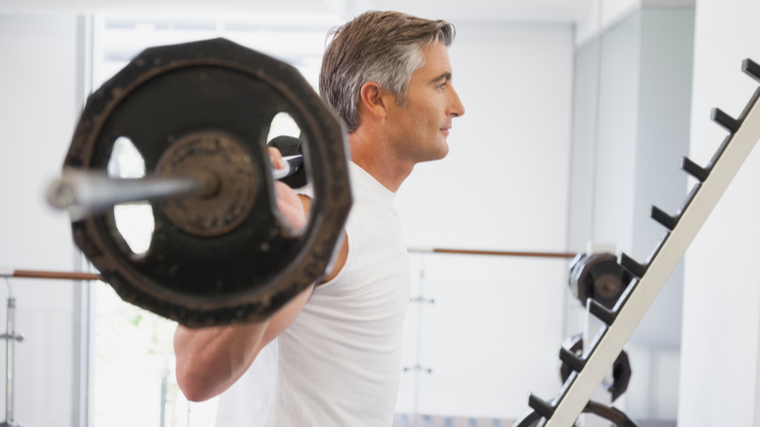
But remember those three important questions? If you answered them honestly, then you know you need to read on.
Be clear about your goals and expectations.
Write out what you currently want out of training and formulate realistic expectations. If you’ve wanted to build 24-inch pythons since the ‘80s but you’re hovering right around the 17-inch mark, it’s time to re-evaluate.
Think long-term.
By this age, you should have a pretty good idea about how you want to live the next phase of your life in and out of the gym. Workouts that have you limping around the office or a back too sore to pick up your kids may not be the best choice.
Patience.
Patience is one of the most powerful tools you can possess, but the trick is to actually put it into practice. Don’t be in a rush to reach your new goals. You have time.
If it’s broken…
You may have once easily worked through beat-up shoulders or knees without much consequence. You’d just slap some muscle rub on it and get lifting. Now, the same approach may leave you sidelined for weeks or months. Never be afraid to ditch an exercise if it (literally) hurts more than helps.
Pay closer attention to your body.
Years ago, you may have trained before you were fully recovered from the previous workout or worked some body parts more often than others. As you age, you should be more connected to what’s going on with your body and treat it accordingly. Recovery is a tool, not a nuisance.
Learn to love lighter weight and strict form.
With a new perspective will come some old allies. To give your joints a break, you might be lifting a little lighter, but that means it’s the perfect time to practice impeccable form. Make it your new religion. Also, bumping your reps into the 10 to 15 range doesn’t mean they’ll be easy. You still need to apply intensity and shoot for muscular failure.
Don’t be too easy on yourself.
Turning 40 isn’t a green light to take it easy and opt for the 2.5-pound dumbbells while bragging about how awesome you once were. You’re still well-capable of getting through some intense and productive workouts, so don’t let yourself off too easily.
Cut out the fluff.
If you’re an experienced lifter, there’s likely been a fair share of fluff exercises that you just “had to” do. Whether it was something everyone else was doing or a new trick you saw in a magazine (remember those?), a lot of that stuff can be cut out. Just use the necessities, not the fads.
Don’t be a follower.
Social media is an SOB. It’s not low on crazy feats of strength and look-at-me exercises. Leave the high risk, ego-inflating trends to the TikTok generation.
Record. Record. Record.
If you’re not keeping a training log, start. Jot down exercises, sets, reps, weight used, and anything else you think might be important. You can’t build your house without keeping track of your plan.
The Right Exercises for More Size and Less Pain
Now let’s take a look at a few movements that might be doing more harm than good, even though they’ve been mainstays in the past. Don’t worry, though. You’re not doomed to trade beloved barbells for “safer” machines, start and end every workout with boring cardio, or make trips to the physical therapist for basic maintenance.
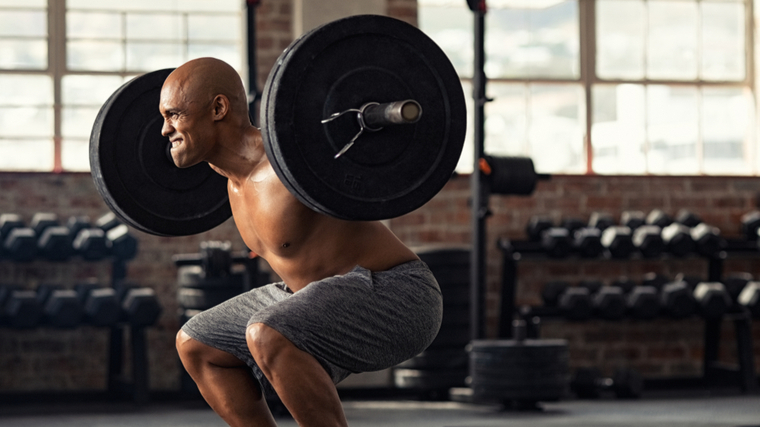
Squat
One of the most popular exercises of all time, the squat is the unofficial grand marshal of leg mass. Unfortunately, it’s also made plenty of knees and backs suffer along the way. With too many bouts of pain, it’s then (maybe unfairly) thrown on the bad-for-you pile.
There may be a little bit more at play here than just a “bad exercise.” Ankle mobility is a problem with many whose knees cry out on every rep. With poor ankle mobility comes an unstable base which leads to painful knees and an overstressed lumbar spine. (2)
The Fix: If you’re reluctant to say goodbye to squats, at least perform daily stretches for your ankles. In the meantime, squat with your heels elevated on a plate to make the ankle angle less stressful. (3) You can also try front squats on for size. Still in pain? Bulgarian split squats will humble your ego in a heartbeat.
Bench Press
Much like the squat, the flat bench press has a similar reputation for delivering results, often at the price of tender shoulders and elbows. Probably the most ego-based lift ever invented, the bench press isn’t for everyone. If you’re able to bench with good technique but still have pain, there is hope.
The Fix: One mistake many lifters make is they angle their elbows too wide in the bottom position. This can put the shoulder joint in a very vulnerable position. To mitigate injury risk, angle your upper arms about 45-degrees from your torso and have the bar touch the lower portion of your pecs. This will place your shoulder in a much more stable position. If that still doesn’t do the trick, opt for dumbbells using the same angle for your upper arms.
Deadlift
The deadlift has long been viewed as a hallmark of sheer full-body strength. The mere thought of lifting a heavy load from the ground exudes raw power. However, many spines are pleading for the insanity to stop. Yes, the deadlift is a functional work of art, but time (and a ton of weight), can take its toll.
The Fix: One modification is utilizing a trap bar. This will prevent an overextension of your lumbar and shift more of the load onto your thighs, relieving lower back strain. If your gym doesn’t have a trap bar, mimic the movement by lifting dumbbells from blocks.
Shoulder Press
Whether it’s standing, seated, with a barbell, or with dumbbells, many lifters see the overhead press as an ego lift early in their lifting careers. Heavy loads and partial reps will eventually have their way with your shoulder joints and most of these lifters end up learning that metal beats flesh.
The Fix: Overhead pressing is a fundamental and functional move, so it’s understandable you’d want to find a way to keep it in your program. One of the best alternatives is to grab a pair of dumbbells and perform seated presses with a neutral (palms facing each other) grip. This will put your shoulders in a stronger and safer plane of motion by having your elbows pointing forward instead of out to the sides (which is their natural orientation).
Pull-up
The reason so many lifters don’t do pull-ups is because they say they can’t do pull-ups. Pull-ups are another functional movement and also one of the best muscle-builders ever. But what if shoulder pain won’t let you do them?
The Fix: Instead of opening up your chest and pointing your elbows out to the sides, contract your abs to pull your pelvis slightly forward. While you do this, point your elbows slightly forward as well. Remember the shoulder press trick? Same thing applies here, you’re just pulling upwards instead of pressing upwards. Using a neutral-grip also helps to keep you in a joint-friendly position.
Leg Press
Ah yes, the leg press. The one machine where anyone can look like a beast. Its short range of motion and angled sled allow you to pile on the plates and pretend to do some serious work. But, unbeknownst to many, this machine can cause some serious back and knee issues.
If you use too much range of motion and bring your legs down too far, your lower back can rise up off of the pad which “curls” your lower spine and exposes it to direct stress. Under load, a curved spine is in big trouble. Knee pain is another common issue, especially when pressing through your toes which causes shear stress to your patellar tendons.
The Fix: First, lighten the load. Next, once you sit down, pull your butt down and remain in contact with the pad at all times. You can avoid rolling your lower back up and off the pad by shortening your range of motion slightly (‘slightly’, being the keyword there).
Finally, be sure to push the plate with your heels. This is where our old friend ankle mobility comes into play. If you’re not quite there yet with your ankle range of motion, you can reinforce pushing through your heels by positioning your feet slightly higher on the platform which makes it more difficult to press with the toes.
You’re Not Done Yet
It’s said that wisdom comes through experience. At this age, experience is one of your biggest advantages. Training for hypertrophy after 40 doesn’t have to be some giant overhaul. All it takes is applying some wisdom, making some modifications, and swallowing your ego to get those gains rolling again. Just remember, you’re making adjustments now so you can keep stepping through the gym doors for plenty more years to come.
References
- Henry A. Feldman, Christopher Longcope, Carol A. Derby, Catherine B. Johannes, Andre B. Araujo, Andrea D. Coviello, William J. Bremner, John B. McKinlay, Age Trends in the Level of Serum Testosterone and Other Hormones in Middle-Aged Men: Longitudinal Results from the Massachusetts Male Aging Study, The Journal of Clinical Endocrinology & Metabolism, Volume 87, Issue 2, 1 February 2002, Pages 589–598, https://doi.org/10.1210/jcem.87.2.8201
- Fuglsang, Emil I.; Telling, Anders S.; Sørensen, Henrik Effect of Ankle Mobility and Segment Ratios on Trunk Lean in the Barbell Back Squat, Journal of Strength and Conditioning Research: November 2017 – Volume 31 – Issue 11 – p 3024-3033 doi: 10.1519/JSC.0000000000001872
- Charlton, Jesse M.; Hammond, Connor A.; Cochrane, Christopher K.; Hatfield, Gillian L.; Hunt, Michael A. The Effects of a Heel Wedge on Hip, Pelvis and Trunk Biomechanics During Squatting in Resistance Trained Individuals, Journal of Strength and Conditioning Research: June 2017 – Volume 31 – Issue 6 – p 1678-1687 doi: 10.1519/JSC.0000000000001655
Featured Image: Slava Dumchev / Shutterstock
